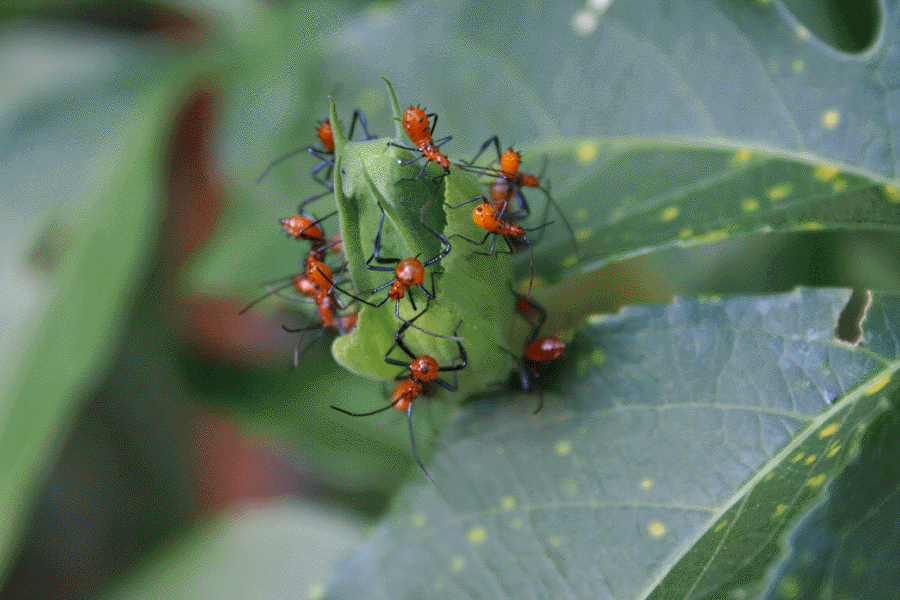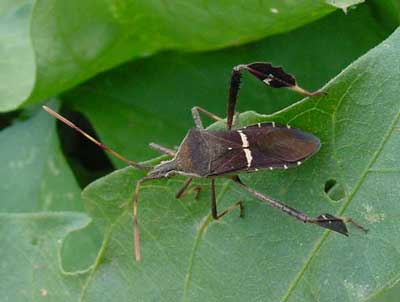What’s That Bug? Leaf-Footed Bugs in the Garden
go.ncsu.edu/readext?721568
en Español / em Português
El inglés es el idioma de control de esta página. En la medida en que haya algún conflicto entre la traducción al inglés y la traducción, el inglés prevalece.
Al hacer clic en el enlace de traducción se activa un servicio de traducción gratuito para convertir la página al español. Al igual que con cualquier traducción por Internet, la conversión no es sensible al contexto y puede que no traduzca el texto en su significado original. NC State Extension no garantiza la exactitud del texto traducido. Por favor, tenga en cuenta que algunas aplicaciones y/o servicios pueden no funcionar como se espera cuando se traducen.
Português
Inglês é o idioma de controle desta página. Na medida que haja algum conflito entre o texto original em Inglês e a tradução, o Inglês prevalece.
Ao clicar no link de tradução, um serviço gratuito de tradução será ativado para converter a página para o Português. Como em qualquer tradução pela internet, a conversão não é sensivel ao contexto e pode não ocorrer a tradução para o significado orginal. O serviço de Extensão da Carolina do Norte (NC State Extension) não garante a exatidão do texto traduzido. Por favor, observe que algumas funções ou serviços podem não funcionar como esperado após a tradução.
English
English is the controlling language of this page. To the extent there is any conflict between the English text and the translation, English controls.
Clicking on the translation link activates a free translation service to convert the page to Spanish. As with any Internet translation, the conversion is not context-sensitive and may not translate the text to its original meaning. NC State Extension does not guarantee the accuracy of the translated text. Please note that some applications and/or services may not function as expected when translated.
Collapse ▲This article was originally posted by former Durham County Horticulture Agent Michelle Wallace on the Extension Master Gardener℠ Volunteers of Durham County Blog. For more articles like this, and to subscribe, visit the blog’s website.
I work in a garden with a group of volunteers. The other day, a sharp-eyed person pointed out some bright orange-red bugs like these on the leaves of one of our potato plants.

Leaf-footed bug nymphs tend to cluster. Photo: Texas Master Gardeners, Galveston County
These are the nymphs of the leaf-footed bug, a relative of stink bugs. Adult leaf-footed bugs are brown, with a flattened, leaf-shaped area on their hind legs. Both the nymphs and adults are pests that damage buds, flowers, fruits, and seeds. Leaf-footed bugs feed on many plants, including tomatoes, peaches, blueberries, beans, okra, and pecans. When these bugs feed on tomato fruit, they cause yellow, hardened spots to develop. Feeding on other fruits can cause brown spots to shriveled, misshapen fruits, depending on the number of bugs and the time the fruits are damaged.
Adult leaf-footed bugs overwinter in weedy areas or under mulch and debris. They lay eggs in a row on the undersides of leaves or on stems. Eggs hatch in 5-7 days, and nymphs mature in 25-30 days.

Leaf-footed bug adult. Photo: Debbie Roos, N.C. Cooperative Extension, Chatham County Center
Leaf-footed bugs and their stinkbug relatives are difficult to control, but scouting for these pests now will help keep populations from building up throughout the season. Removing the nymphs and adults by hand and dropping them into a container of soapy water is an effective means of control when populations are small. You may want to wear gloves when picking leaf-footed bugs from your plants – they do have an unpleasant smell. There are few organic pesticides that are effective on these bugs, but hand picking now and reducing places where the adults can overwinter will help keep next year’s population in check. If you choose to use an insecticide to control a large population of leaf-footed bugs, pyrethroids can be used as directed.
Just a quick word of caution, though – some assassin bugs (beneficial insects) are also orange and can look similar to the leaf-footed bug nymphs shown above. For photos of assassin bugs, see the University of Kentucky Entomology website.
For more information about leaf-footed bugs:
Eastern Leaf-Footed Bug – NC Plant Disease and Insect Clinic Factsheets




